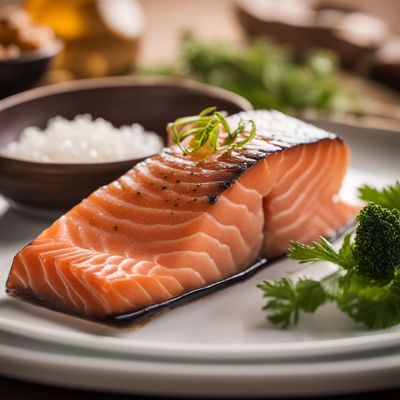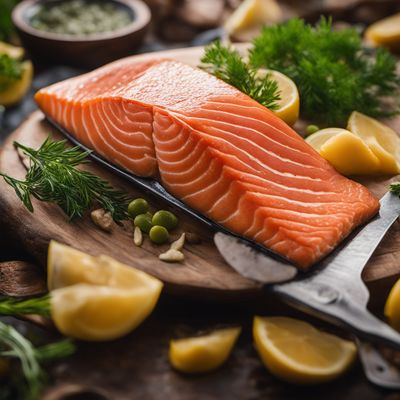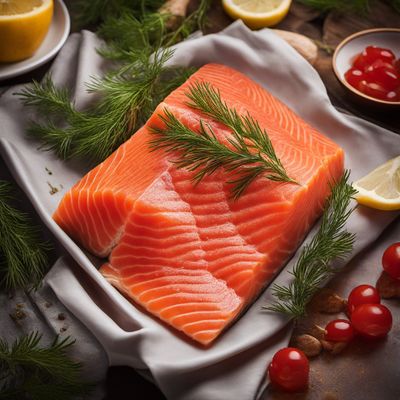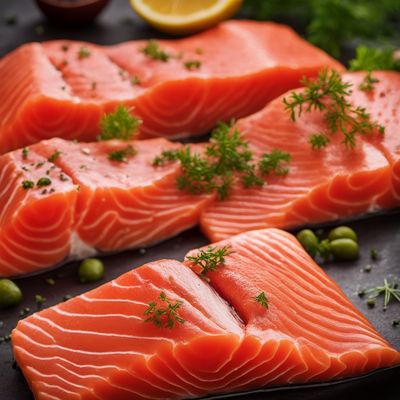
Ingredient
Pink salmon
The Vibrant Delight: Exploring the World of Pink Salmon
Pink salmon is a species of salmon that is known for its distinctive pink flesh and mild flavor. It has a firm yet tender texture, making it suitable for a variety of cooking methods such as grilling, baking, or poaching. The flesh of pink salmon is lean and delicate, with a slightly sweet taste that pairs well with a range of flavors and ingredients. Its vibrant pink color adds visual appeal to any dish, making it a popular choice among chefs and home cooks alike.
Origins and history
Pink salmon is native to the northern Pacific Ocean, particularly the coastal waters of North America and Asia. It has a rich history and cultural significance among indigenous communities in these regions, who have relied on pink salmon as a valuable food source for centuries. The species is known for its annual migration, during which it returns to its natal streams to spawn. Pink salmon has also been commercially harvested since the late 19th century, contributing to its popularity in the culinary world.
Nutritional information
Pink salmon is a nutrient-dense ingredient, rich in high-quality protein, omega-3 fatty acids, vitamin D, and several essential minerals. It is also relatively low in calories, making it a healthy choice for those seeking a balanced diet.
Allergens
Pink salmon may pose a risk for individuals with fish allergies.
How to select
When selecting pink salmon, look for firm, shiny flesh with a vibrant pink color. Avoid any fish with dull or discolored flesh, as it may indicate poor quality or spoilage. Additionally, check for any signs of bruising or strong fishy odor, which are indicators of freshness.
Storage recommendations
To maintain the freshness and quality of pink salmon, it is best to store it in the refrigerator at a temperature below 40°F (4°C). If the fish is whole, it should be consumed within 1-2 days, while fillets or steaks can be stored for up to 3 days. For longer-term storage, pink salmon can be frozen, ideally vacuum-sealed or tightly wrapped in plastic wrap and aluminum foil, for up to 3 months.
How to produce
Pink salmon can be produced by amateur fishermen through recreational fishing or by participating in sustainable aquaculture practices. However, it requires specific knowledge and permits to ensure the preservation of the species and the environment.
Preparation tips
Pink salmon can be prepared in various ways, including grilling, baking, broiling, or poaching. To enhance its flavor, marinating the fish with citrus juices, herbs, or spices before cooking is recommended. When grilling or baking, it is important to avoid overcooking to maintain the tender texture. Pink salmon also pairs well with a variety of ingredients such as lemon, dill, garlic, and soy sauce, allowing for endless culinary creativity.
Culinary uses
Pink salmon is commonly used in a wide range of dishes, including salads, sandwiches, pasta, sushi, and seafood stews. It can be served as a main course or incorporated into appetizers and spreads. Its versatility allows it to be enjoyed in both hot and cold preparations, making it a popular choice for various cuisines around the world.
Availability
Pink salmon is commonly available in regions such as North America, particularly Alaska, as well as Russia and Japan, where it is extensively cultivated and harvested.




